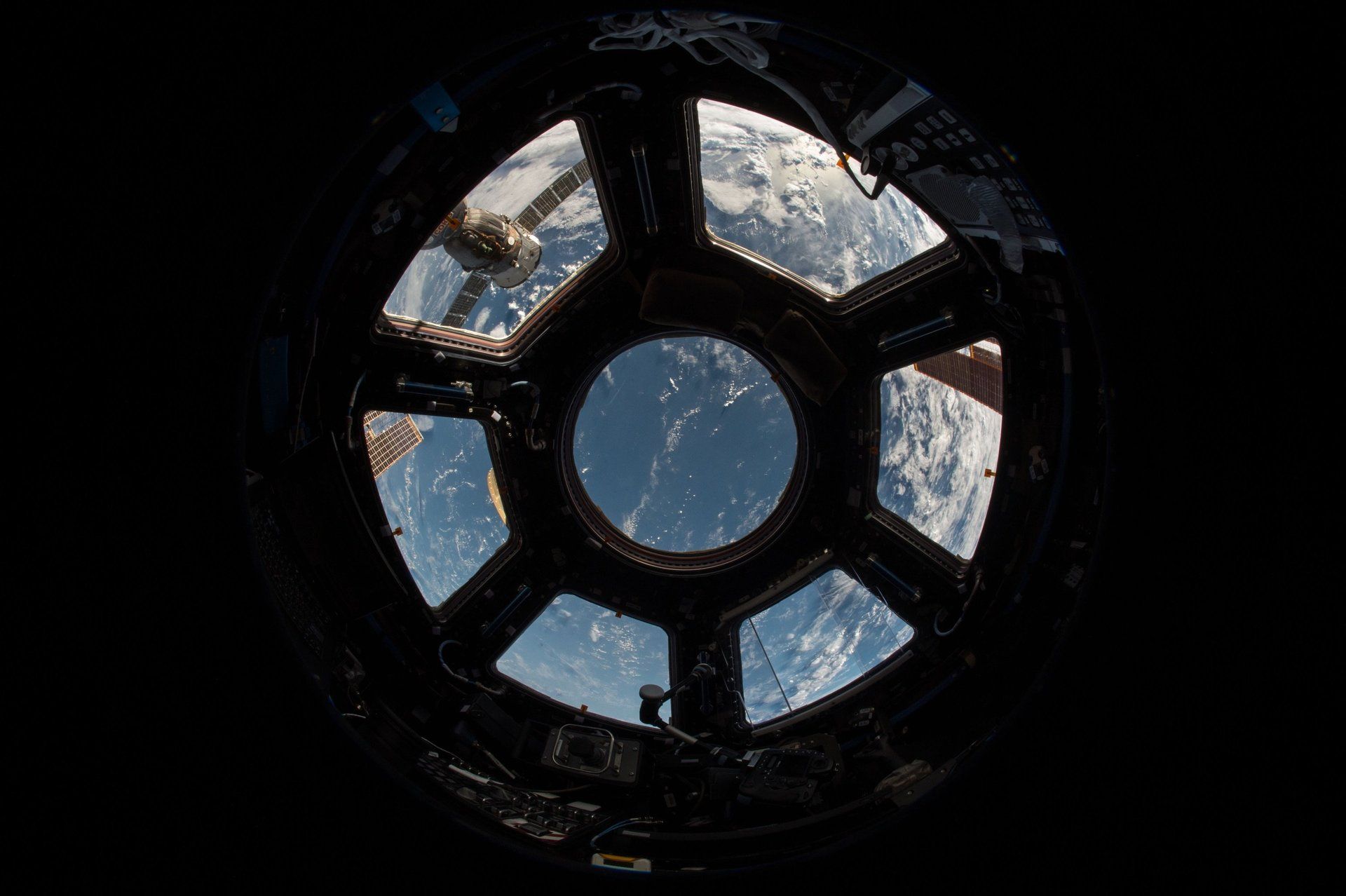SECURITY CHALLENGES IN OUTER SPACE
How to Facilitate International Space Cooperation with China?
China’s growth as a prominent space-faring power necessitates staunch engagement with the CCP. The encroachment of private actors in the space domain also begs the questions as to how all these different actors will engage with each other in a seemingly lawless realm. This article lays out the current most pressing challenges in space pertaining to the US, the EU, and China, and cases of successful and unsuccessful Chinese cooperation with other state and non-state actors.
By Eiza Marot
August 9, 2021
Outer-space is emerging as the final frontier: a unique dual-use realm that oversees approximately 3,372 operational satellites, and this number is expected to grow much larger with the encroachment of non-state actors like Space X’s Starlink Constellation. (Union of Concerned Scientists 2021). Space is a critical domain for both civilian and military purposes as earth-based critical infrastructure has become extremely dependent on the secure data flows between earth-based ground control centres and satellites. For the United States, space is a key domain that has allowed it to integrate advanced space systems into its military operations as well as project power from a great distance.
Space also houses space assets essential to civilian livelihoods including communications, navigation, meteorological, and observation satellites. Outer-Space is a critical domain for the Chinese Communist Party (CCP), not just in a security sense, it is a matter pertaining to national pride. Space, from the Chinese perspective, is the ultimate higher ground, militarily speaking, and is envisioned to play a key role in attaining the ‘Chinese Dream’ to create a more prosperous and stronger nation. China has ambitious plans in space including orbital, lunar, and deep-space activities. In 2022, China plans to build its very own Tianhe space station, just as the International Space Station (ISS) has announced it will be closing shop by 2024. Space experts assert that the ISS could remain operable by 2033 but if it is indeed decommissioned, Tianhe could fill the global demand for an operating space station (NASA Spaceflight 2021).
With a growing number of actors in orbit, space is becoming increasingly crowded, weaponized, and we are witnessing an absent global regime on arms control. There are currently no tangible laws in existence that regulate the weaponization, nor are there any international laws that address the proliferation of space debris. Space is increasingly at risk of becoming a volatile, hostile environment, and the cost of a space conflict is all but to high given the global dependence on space assets. To face the ‘wicked’ problems there will need to be a global consensus and international cooperation to tackle space security, moreover, China’s growth as a prominent space-faring power necessitates staunch engagement with the CCP.
The encroachment of private actors in the space domain also begs the questions as to how all these different actors will engage with each other in a seemingly lawless realm. Nevertheless, this policy paper will layout the current most pressing challenges in space pertaining to the US, the EU, and China, and cases of successful and unsuccessful Chinese cooperation with other state and non-state actors.
Current Challenges Facing Outer-Space
There are several challenges that need to be addressed on space: the proliferation of space weapons, the lack thereof a definition, the weaponization of space, deadlocks on the international treaties, the encroachment of non-state actors (both malicious and well-intentioned), and space debris.
Space weapons and the weaponization of Space
One of the biggest challenges to instituting in outer space regards the issue of the weaponization space. Each of the major space faring powers each have their own specific reasons for pursuing anti-satellite capabilities (ASATs). To put simply, China does not have the same nuclear posture as the US and perceives space as the higher ground that it can leverage against the US, whilst Russia perceives ASAT capabilities as being a useful deterrence strategy against the US and China. Meanwhile, the US assessment of its ASAT capabilities is that ASATs are essential to protecting their space assets and hegemony in space and deterring the Sino-Russian axis (Weeden 2020).
Absence of a comprehensive legal framework
At an international level, the current legal framework regarding peaceful use of space is unfortunately rather lacking other than the Outer Space Treaty (1967), the Proposed Prevention of an Arms Race in Space (1985), both of which refrain parties from placing objects carrying any type of weapon into orbit, installing weapons on celestial bodies, and threatening to use force against objects in outer space (UNIDIR 2002). Meanwhile, the only space arms control proposal currently on the table, the Russian and Chinese-backed Draft Treat on the Prevention of the Placement of Weapons in Outer Space (PPWT) has been staunchly disregarded by the US due to conflicting conceptions on the definitions of ‘space weapons’ outlined in the Draft Treaty (Samson & Weeden 2020). There are also voluntary measures that space faring powers can take to regulate space activities called Transparency and Confidence Building Measures (TCBMs). TCBMs are perceived as a practical alternative to conventional treaties in the sense that they fill in many of the gaps within existing mechanisms and treaties like the OST. However, given the nature of these non-legally binding measures, a party’s activities are more difficult to verify.
‘Space congestion’ and lack of communications amongst stakeholders
An additional roadblock to building an international legal regime on arms control in space is the lack of communication between state actors, state actors and non-state actors, and between non-state actors themselves. Space experts assert the lack of communication between increasingly powerful private entities to be quite alarming, the recent case of the SpaceX’s satellite and the British-owned OneWeb satellite were 60 m away from colliding into each other in orbit. Reports later indicated that SpaceX had disabled its AI-powered collision avoidance system to allow OneWeb to steer its satellite out of the way (Roulette 2021).
Fortunately, Space X and OneWeb were able to coordinate just in time to manoeuvre their satellites, but this collision could have resulted in catastrophic emissions of space debris in an already extremely congested orbit.
Proliferation of space debris
This case invokes the most pressing environmental/ security issues in space: the proliferation of space debris. More than 20,000 trackable pieces of space junk orbit the planet and is presented as a more problematic threat due to the sheer speed at which space debris travels, even the tiniest fragment could render a satellite inoperable. The European Space Agency calculated that an aluminium ball of even one centimetre in diameter collides with a satellite, it has the energy of a mid-range car (Brzozowski 2019).
Non-state actors pertaining to private corporations, researchers, universities, and malicious non-state actors, are taking up more space in orbit, which will undoubtedly pose a massive strain on space traffic, the viability of space assets, as the domain remains sadly unregulated. The barriers to entry in space are lower than ever through cyber and physical means into orbit, which could leave space in a state of disarray, the wild west.
US Threat Perception of Chinese Space Development
The US position on Chinese assertion in space perceives Chinese advancements in space, both civilian and military, to be a threat to its national security. According to a recent report published by the US Intelligence Community (2021), China’s space program was assessed as the top security concern for the US and stated that “Beijing is working hard to match or exceed US capabilities in space to gain the military, economic, and prestige benefits that Washington has accrued from space leadership” and noted the soon to be commissioned China’s space station as a possible threat.
Space policy experts have argued that the report’s conception of the security threats posed by Chinese activities in space conflated the military and civilian space pursuits. Victoria Samson from the Secure World Foundation (SWF) questioned why the report classified China’s space station as a threat at all, even though it had been in the works for over decade (2021).
In addition, the geopolitical rivalry between the US and China is compounded by the stringent Wolf Amendment which forbids NASA from cooperating in any shape, way or form with China due to fears of espionage, intellectual property theft. Space experts have argued that it is high time to consider repealing the Wolf Amendment and that while it does not directly prohibit working with Chinese counterparts, the effect of the bill certainly does.
On the other hand, Kevin Pollpeter argues that China has gradually been building more war fighting footing for its space program and that US concerns on heightened Chinese counter-space capabilities are a valid qualm as the PLA could use its civilian space program as a guise for its military space developments (Pollpeter, Anderson, Wilson 2015).
China’s rapidly improving capabilities and investments in ASATs are indeed of great concern, intelligence suggests that Beijing is developing up to three different ASATs, with the more recent development of robotic arm technology which the US Defense Intelligence Agency has determined could be used as a weapon. All space experts would agree that the escalation of weapons in space is detrimental to the securitization of space but the key to resolving conflict involving dual-use nature of technology implemented in orbit, like Beijing’s robotic arm, is intent, therefore, there needs to be more emphasis on assessing the extent to which actors carry responsible behavior in space (Samson 2021).
Moreover, Brian Weeden’s testimony to the US-China Economic and Security Review Commission expresses that China has indeed complied with the existing legal principles and norms from the four main space treaties and that there is no evidence suggesting China would contradict these legal frameworks. The US has noted while some of China’s rendezvous and proximity operations (RPO) activities may have been precursors to co-orbital ASAT capabilities Weeden states that they have been entirely consistent with international law (2019).
EU: Strategic Autonomy and Ambitions in Space
Space, for the EU, is vital to its pursuit of strategic autonomy as it aids situational awareness, decision-making, connectivity of technological systems and to its diplomacy toolbox, however, the EU’s space policy currently stands fixed at a crossroads as it needs to ensure it can enhance its space presence and push technological frontiers without disrupting its industrial supply chains and strategic autonomy (EU Directorate General for External Polices of the Union 2020).
Space is a strategic domain and therefore there exists an inherent political ambition to enhance the EU’s autonomy in space to ensure the EU’s economic and defense prosperity, as affirmed by the European Council (Grevi 2019). The reason why the EU is so fixed on building its strategic autonomy in space is due to the rise of geopolitical competition in space, as global competitors invest heavily in space defense technologies given that the EU is unfortunately lacking in this area. The EU does not have its own space-based space surveillance and tracking (SST) capabilities or collective ASAT warning capabilities (Fiott 2021). Even the EU and its member states’ military systems are highly dependent on functional satellites, for example, the Future Combat Aircraft System (FCAS) depends on space assets for communications and positioning.
Satellites, being vulnerable to hacking, jamming, or even weaponization, need resilient defense systems to withstand the plethora of risks in space, security on the ground demands it. Between the US-China standoff, the mounting deadlocks on international treaties, and emboldened private entities, the EU will have a unique part to play as a shaping, mediating power. As it currently stands, the neither the US nor China consider the rules-based order to be a central focus to their respective strategies (Grevi 2019). Strategic autonomy is space means resilience for the EU and its member states in space and on Earth, which cannot occur without engaging with China (Foust 2019).
Multilateral Cooperation with China
China’s Perspective on Space
China’s objectives for its space program are rooted in its nationalistic Chinese Dream which will give it the opportunity to gin more economic and political, domestic legitimacy, and international prestige. China has outspent every country in 2020 regarding space activities, but in comparison to the US, Beijing’s $ 8.9 billion simply cannot compare to the US’ $48 billion budget (CSIS 2021). China’s ambitions for space power are similar to nuclear power as space capabilities are used for deterrence, however, these they are distinguished by the threshold for space power is lower than for nuclear weapons.
Chinese scholars refer to space war or tian zhan (天站), as military confrontations occurring in space, integrating military defensive and offensive operations in space, and engaging with targets from space and air space (Bowe 2019). The Chinese perspective on space power sees the domain as having two uses: for deterrence and real war fighting capabilities. Space from the Chinese perspective is the ultimate high ground as American military capabilities are hugely contingent on the sophisticated yet exposed networks of communications, command, control, surveillance, and computer intelligence through space assets (Tellis 2007). Incidentally, in the face of US obstruction China set to build its very own space station, Tianhe, after its request to join the ISS was rejected by the US.
China and the ESA see eye to eye on Space
China formally launched its manned space program called Project 921 in 1992, the critical component of which was the development of Tiangong space labs which were critical testbeds for configuring the CSS. Chinese engineers, building on the successes of Tiangong-1/-2, were able to build the core module of the CSS (CSIS 2019). While smaller in size, Chinese engineers stipulate that Tianhe could be expanded through international cooperation. The ESA and the National Remote Sensing Centre of China (NRSCC) launched the fourth phase of their collaborative Dragon programme in Wuhan which identified the overall drop in water levels in the Poyang Lake over a decade (ESA 2016).
ESA astronauts also trained with their Chinese colleagues in 2017 to prepare to fly on the CSS. The collaboration represented a decent milestone in establishing the ESA as a partner in space (ESA 2017). The ESA have also collaborated on the Double Star project which was signed in 2001 and marked the first time the ESA board its own experiments on Chinese satellites (ESA 2021). More recently, in 2019, the Solar wind-magnetosphere-Ionosphere Link Explorer (Smile), unlike Double Star, was envisaged as being a joint ESA-China mission from the very start (ESA 2019). In addition, the ESA has also assisted the recent Chang’e-5 and ongoing Mars Tianwen-1 missions.
Sino-Russian cooperation in Space
Russia has been a long-time collaborator in space alongside its US colleagues, though in the last decade China and Russia have criticised US’ weaponization of space by preparing to place weapons in orbit. Beijing and Moscow linked arms to draft the PPWT which invoked criticism from the US for the treaty’s lack of clarity on space weapons.
More recently, Russia and China have signed on to build a work on an International Scientific Lunar Station orbiting the Moon which will rival NASA’s Gateway program, moreover, Russia declined the offer to partner with the US on Gateway. This strategic partnership means that the two nations will be able to pool together their resources and signals that both parties do not perceive the US plight to be the only means of cooperating in space (Goswami 2021).
Not to mention, the US did not extend an invitation to Russian counterparts to join in on the Artemis Accords, an agreement that includes the ESA and several other nations (Australia, Japan, Canada, Luxembourg, Italy, Ukraine, the UK, and the United Arab Emirates). The agreement seeks to establish norms for exploration and behaviours in space however Russia and China find the accords to be too ‘US-centric’. A new geopolitical divide appears to be emerging in space: the Russia-China axis against the rest, a dynamic that will make multilateral cooperation to address space security even more difficult.
Recommendations for facilitating engagement with China
Space debris removal and regulatory frameworks
There are no current international laws that ban the proliferation of space debris in orbit, and in accordance with the Kessler Effect (cascading effect of debris) that occurs when debris is emitted: the more debris is created, the higher risks of collisions, and the higher number of debris remains in orbit. This is dangerous for the safety and wellbeing of all space assets, future missions, astronauts, and poses risks to the critical infrastructure on Earth that is reliant on satellites. This global wicked problem could motivate not just the space faring powers, but the non-state actors in China, the US, Russia, Europe, to mobilize space debris removal programs, and build norms that deter the proliferation of such debris.
Cybersecurity vulnerabilities: information sharing between space industry and researchers
Public and private actors in China and the US should learn to collaborate and hold each other accountable to an agreed set of cybersecurity standards, policy makers should endeavour to establish a separate body, facilitated by a state agency, that can mediate between public and private entities. To reiterate, there needs to be more communication and information sharing between the private and public sector in space as private sector entities like SpaceX begin to take on a bigger role in the industry.
Regulating the quantity of space objects in orbit
There is currently no legal framework regulating who and how many satellites can be launched into space, and unfortunately, the current environment in orbit is getting busy and messy. Policy makers need to establish rules for all actors involved, both in the private and public sectors, whether in the form of soft law like a TCBM, or even through an extensive from the Artemis Accords. More traffic means more risk of collisions between space objects.
Repeal the Wolf Amendment
Any cooperation between NASA and the CNSA is deadlocked by this amendment. While not directly prohibitive, the amendment first requires certification from the FBI. To that effect, collaboration is prohibited. The purpose of the Wolf Amendment initially was to shape Chinese behavior in space and has been largely ineffective in this regard. This step is essential to take if the US decides to undertake joint civil missions with their Chinese counterparts.
Conclusion
The stakes in space could not be any higher, the implications of utilizing weapons or weaponizing space could not be more catastrophic for the viability of future operations and for critical infrastructure on earth dependent on dual-use satellites. Space infrastructure has also become highly exposed to cyber and physical vulnerabilities from malicious or violent non-state actors. China is extremely motivated to tackle the issue of space debris, though the recent wreckage of the Chinese rocket that plummeted to Earth on April 8th led to the pointing of fingers and has exacerbated the geopolitical rift between China and the US (South China Morning Post 2021). It should be noted that the uncontrolled deorbit of the SkyLab space station partially hit Australia, despite the US’ assertions that the debris had fallen into the Indian Ocean.
Nevertheless, the impetus for multilateral action in the sphere of space security and sustainability necessitates all space faring powers and actors in establishing responsible uses of space. International treaties may be too slow moving to keep up with the rapid changes occurring in space, it may be more prudent to look to private entities to begin establishing acceptable norms and rules of behavior to build safer and more sustainable space exploration.
References
Reports
[1] Bowe, Alexander. China’s pursuit of space power status and implications for the United States. US-China Economic and Security Review Commission, 2019. https://www.uscc.gov/sites/default/files/Research/USCC_China's%20Space%20Power%20Goals.pdf
[2] Fiott, Daniel. The European space sector as an enabler of EU strategic autonomy. European Parliament, 2020. https://www.iss.europa.eu/sites/default/files/EUISSFiles/EXPO_IDA%282020%29653620_EN.pdf
[3] Fiott, Daniel. Securing the heavens: How can space support the EU’s strategic compass? European Union Institute for Security Studies, 2021. https://www.iss.europa.eu/sites/default/files/EUISSFiles/Brief_9_2021_0.pdf
[4] Grevi, Giovanni. Strategic autonomy for European choices: The key to Europe’s shaping power. European Policy Centre, 2019. https://wms.flexious.be/editor/plugins/imagemanager/content/2140/PDF/2019/190719_Strategicautonomy_GG.pdf
[5] Harrison, Todd, Johnson, Kaitlyn, Roberts, Thomas G. Space Threat Assessment 2018. Washington D.C: Centre for Strategic and International Studies, 2018. https://csis-website-prod.s3.amazonaws.com/s3fs-public/publication/180823_Harrison_SpaceThreatAssessment_FULL_WEB.pdf
[6] Harrison, Todd, Johnson, Kaitlyn, Young, Makena, Defense Against the Dark Arts in Space. Centre for Strategic and International Studies, 2021. https://csis-website-prod.s3.amazonaws.com/s3fs-public/publication/210225_Harrison_Defense_Space.pdf?N2KWelzCz3hE3AaUUptSGMprDtBlBSQG
[7] Pollpeter, Kevin, Anderson, Eric, Wilson, Jordan, Yang, Fan. China Dream, Space Dream: China’s progress in space technologies and implications for the United States. US-China Economic and Security Review Commission, 2015. https://www.uscc.gov/sites/default/files/Research/China%20Dream%20Space%20Dream_Report.pdf
[8] Porras, Daniel, Eyes on the Sky: Rethinking Verification in the Sky. UNIDIR, 2019. https://www.unidir.org/sites/default/files/2019-10/Eyes%20on%20the%20Sky%20%7C%20Rethinking%20Verification%20in%20Space_1.pdf
[9] UCS Satellite Database. The Union of Concerned Scientists. Union of Concerned Scientists, 2021. https://ucsusa.org/resources/satellite-database?_ga=2.206523283.1848871521.1598077135-464362950.1598077135
[10] UNIDIR. “Prevention of Outer Space Arms Race, Ratification of Nuclear Test Ban Treaty Among Issues Addressed by Texts Introduced in First Committee.” Published October 15 2002. https://www.un.org/press/en/2002/gadis3233.doc.htm
[11] US Office of the Director of National Intelligence. Annual Threat Assessment of the US Intelligence Community. Published April 9, 2021. https://www.odni.gov/index.php/newsroom/reports-publications/reports-publications-2021/item/2204-2021-annual-threat-assessment-of-the-u-s-intelligence-community
[12] Weeden, Brian, “Current and Future Trends in Chinese Counterspace Capabilities”, Proliferation Papers, IFRI, November 2020, https://www.ifri.org/sites/default/files/atoms/files/current_and_future_trends.pdf
Webpages
[13] Barbosa, Rui. 2021. “China preparing to build Tiangong station in 2021, complete by 2022.” NASA Spaceflight. March 1 2021. https://www.nasaspaceflight.com/2021/03/china-preparing-to-build-tiangong-station-in-2021-complete-by-2022/
[14] Brzozowksi, Alexandra. “Europe aims to clean up the space graveyard.” September 3 2019. https://www.euractiv.com/section/global-europe/news/europes-aims-to-clean-up-the-space-graveyard/
[15] Chen, Stephen. 2021. “China-SU tensions move to space as rocket debris heads for Earth.” South China Morning Post. May 8 2021. https://www.scmp.com/news/china/science/article/3132702/china-us-tensions-move-space-rocket-debris-heads-earth
[16] ESA. 2016. “ESA’s cooperation with China extended to 2020.” ESA. July 8 2016. https://www.esa.int/Applications/Observing_the_Earth/ESA_s_Dragon_cooperation_with_China_extended_to_2020
[17] ESA. 2017. “ESA and Chinese astronauts train together.” ESA. July 8 2017. https://www.esa.int/Science_Exploration/Human_and_Robotic_Exploration/Astronauts/ESA_and_Chinese_astronauts_train_together
[18] ESA. 2021. “Double Star Overview ESA. https://www.esa.int/Science_Exploration/Space_Science/Double_Star_overview2
[19] ESA. 2019. “ESA gives go-ahead for Smile mission with China.” ESA. March 5 2019. https://www.esa.int/Science_Exploration/Space_Science/ESA_gives_go-ahead_for_Smile_mission_with_China
[18] Erwin, Sandra. 2021. “Analysts: China’s space programs are a security concern to the US but not all are nefarious.” Space News. April 16 2021. https://spacenews.com/analysts-chinas-space-programs-are-a-security-concern-to-the-u-s-but-not-all-are-nefarious/
[19] Gehrke, Joel. 2021. “Intel chief : China to put space station in orbit during Biden presidency.” Washington Examiner. April 14 2021. https://www.washingtonexaminer.com/policy/defense-national-security/intel-chief-china-to-put-space-station-orbit-during-biden-presidency
[20] Goswami, Namrata. 2021. “The strategic implications of the China-Russian Lunar Base Cooperation Agreement.” The Diplomat. https://thediplomat.com/2021/03/the-strategic-implications-of-the-china-russia-lunar-base-cooperation-agreement/
[21] Ni, Adam. 2019. “Yearbook 2019: China Dreams, Dreams in Space.” The China Story. https://www.thechinastory.org/yearbooks/yearbook-2019-china-dreams/forum-projecting-the-dream/dreams-in-space/
[22] Roulette, Joey. 2021. “OneWeb, SpaceX satellites dodged a potential collision in orbit.” The Verge. April 9 2021. https://www.theverge.com/2021/4/9/22374262/oneweb-spacex-satellites-dodged-potential-collision-orbit-space-force
[23] Samson, Victoria & Weeden, Brian. 2020. “US should start space security talks with Russia, China.” Breaking Defense. May 21 2020. https://breakingdefense.com/2020/05/us-should-start-space-security-talks-with-russia-china/
[24] Samson, Victoria. 2021 “Threats to space aren’t just weapons.” Trends Research. February 24 2021. https://trendsresearch.org/insight/threats-to-space-arent-just-weapons/
Journal articles
[25] Tellis, Ashley. 2007. “China’s military space strategy.”
Global Politics and Strategy, vol. 49, issue 3: pp. 41-72.
https://doi.org/10.1080/00396330701564752
Eiza is an international security specialist and is very passionate about researching current trends regarding space security. She believes it is essential that we maintain that space is indeed used for peaceful purposes. She is also a Star Wars fan.
Read More


Watch Our Episodes





